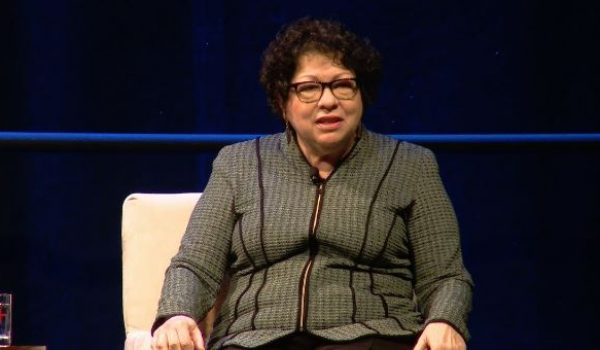
The White House boasts that during the Biden administration, “62% of confirmed judges are people of color” and “64% of confirmed judges are women.” “President Biden is building a bench that reflects all of America,” it says. But as Free Beacon reporter Aaron Sibarium notes, Biden’s appointees are not typical of America: America is “not 64% women and 62% people of color.” Indeed, “White people make up 71 percent of America but just 38 percent of Biden’s confirmed judges. Men make up 50 percent of America but just 36 percent of Biden’s confirmed judges.”
Biden’s racially and sexually lopsided appointments aren’t needed to eliminate discrimination against minorities or women. Indeed, the percentages of minority and female judges in the federal judiciary already exceed the percentages of minority and female lawyers in the legal profession. Only 5% of lawyers are black, while 76% of lawyers are non-Hispanic whites. This reflects the fact that most Americans are white, and only 13.6% of the U.S. population is black.
The people qualified to be federal judges are experienced lawyers who have litigated in the federal courts. Such experienced lawyers are predominantly white and male. Only about 40% of all lawyers are female, and among experienced, full-time attorneys (such as law firm partners), the percentage is significantly lower than 40%. In 2021, 39.3% of federal judges were women. Now, three years later, the female percentage of federal judges is well above 40%, due to the retirement of many mostly male judges, and the appointment of more mostly female Biden appointees,
Even among the experienced Democratic lawyers one would expect Biden to pick judges from, a majority are white and a majority are male.
Blacks have not been discriminated against in judicial appointments in generations, and actually are overrepresented on the federal bench. ”As of February 20, 2023, 25 (15%) of 170 active circuit court judges are African American (of whom 13 are men and 12 are women),” notes a CRS Report. The percentage is even higher now. As former Justice Department lawyer Ed Whelan noted in 2021, when there were far fewer blacks on the bench than there are today, “black men are overrepresented in the federal judiciary: They account for 7.9 percent of active federal judges but only 6.8 percent of the population.”
Black men are even more overrepresented compared to their share of the legal profession. The black percentage of the legal profession is a much more logical benchmark for assessing “underrepresentation” than the black percentage of the population, because judges need legal experience to do their job competently, so it is the legal profession’s demographics that potentially matter, not the general population’s. According to “the American Bar Association’s 2020 Profile of the Legal Profession….85.9 percent of American lawyers are white, 4.7 percent are African American, 4.6 percent are Hispanic, and 2.1 percent are Asian American.” While whites back in 2020 “account[ed] for 85.9 percent of lawyers,” they accounted for “only 72 percent of active federal judges,” making whites underrepresented on the bench.
“Meanwhile, African Americans are overrepresented by a factor of nearly three: They make up 12.7 percent of active federal judges while accounting for only 4.8 percent of lawyers,” said Whelan back in June 2021, when there were fewer blacks on the bench. “Hispanics are doubly overrepresented: 9 percent of active federal judges versus 4.6 percent of lawyers. Ditto for Asian Americans: 4.7 percent of active federal judges versus 2.1 percent of lawyers,” noted Whelan.
Blacks are overrepresented on the Supreme Court. There are two black Supreme Court justices comprising 22% of the Supreme Court, and there has been a black Supreme Court justice ever since 1967 — even though blacks have never been more than 14% of the U.S. population during that period, and blacks have usually comprised less than 3% of the legal profession during that period. (It is the black percentage of the legal profession, not the black percentage of the general population, that is legally relevant in assessing whether blacks are “underrepresented” in the judiciary, according to Supreme Court rulings like Wards Cove Packing Co. v. Atonio (1989), and federal appeals court ruling like Janowiak v. South Bend (1984).
In theory, Biden’s use of race and gender in judicial selection may violate the Constitution, because it isn’t needed to remedy any recent, intentional discrimination against blacks or women in judicial selection, or even any manifest racial or sexual imbalance at their expense. The Constitution forbids even discrimination in favor of blacks and women in many cases, such as when the Supreme Court struck down affirmative action for blacks in college admissions.
But, in practice, the courts are unlikely to block Biden’s appointment of a particular judge, even if it is rooted in racial or gender bias; as law professors have noted, the courts are likely to see separation of powers problems in ruling against a president’s appointment of high-ranking political appointees (such as federal judges), even when base motives are behind such an appointment.



